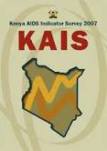By David Njagi
 The government has assured Coast residents of participation in the 2012/13 Kenya AIDS Indicator Survey (KAIS) despite the tensions that have recently plagued the region.
The government has assured Coast residents of participation in the 2012/13 Kenya AIDS Indicator Survey (KAIS) despite the tensions that have recently plagued the region.
Reports coming from there indicate that most activities have stalled following the declaration by the separatist group Mombasa Republican Council (MRC) to paralyze operations along the coastal strip.
The Tana Delta clashes too, which left more than 100 people dead and thousands displaced from their homes, have chilled activity, with fears of renewed conflict looking possible as Kenya edges closer to the March 2013 polls.
But the Kenya National Bureau of Statistics (KNBS) is certain that the national wide survey will take off despite tensions in some parts of the country.
“The security apparatus are in place to protect the survey,” says Samuel Ogola, the population and social statistics senior manager at KNBS. “This is a government exercise and we expect it to go on as scheduled.”
Kenya National AIDS and STI Control Programme (NASCOP) today (Friday) announced plans to roll out the second KAIS at a cost of US$ 7.5 million (about Ksh. 630 million).
The survey will for instance provide informed details for technocrats to be able to establish whether HIV and AIDS is still a national disaster although medics rank it as a chronic disease.
“The evidence that we will gather through this survey will inform the production of the next HIV and AIDS strategic plan,” says Dr. Patrick Mureithi of the National AIDS Control Council (NACC).
All Kenyans are expected to participate in the survey which will culminate to a report in September 2013, according to NASCOP officials.
In the 2008/09 KAIS, the national prevalence was placed at 6.3 per cent, with women accounting for the highest prevalence at eight per cent.
But it is the use of technology in the coming survey that is expected to raise interest since it will be the first time for a population based survey in Kenya.
Researchers involved in the survey say the 40 field teams will be equipped with a net book for data collection and transmission.
“They will be used in household based surveys,” says Dr. Davies Kimanga, the strategic information, surveillance and research manager, NASCOP. “Data will be collected directly though the gadgets and then transmitted to the national server for analysis.”
According to him, a team has been trained on how to use the portable gadget, which functions like any other computer, only that it is smaller.
For regions that are not connected to the electricity grid, batteries that will last at least 12 hours will be supplied while a back up pack will ensure the process covers the full 24 hours, he says.
“We are going to use about 280 net books,” says Dr. Kimanga. “We will also use social media for mobilization to let people know about KAIS and ensure this information is passed on to the entire country.”
Among the institutions funding the survey include, the Kenya and US governments, the World Bank, Japan International Cooperation Agency (JICA) and the joint UN family.
